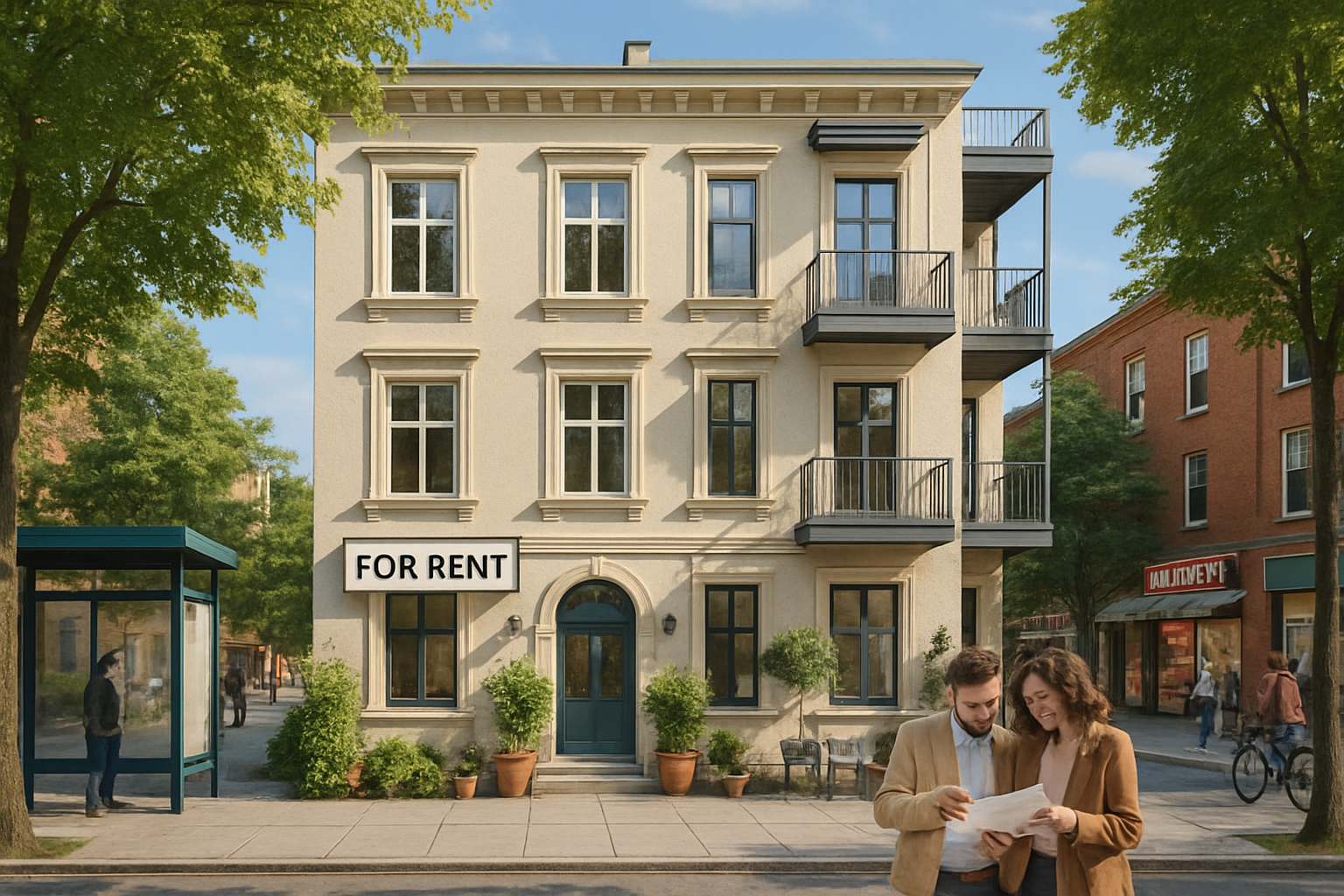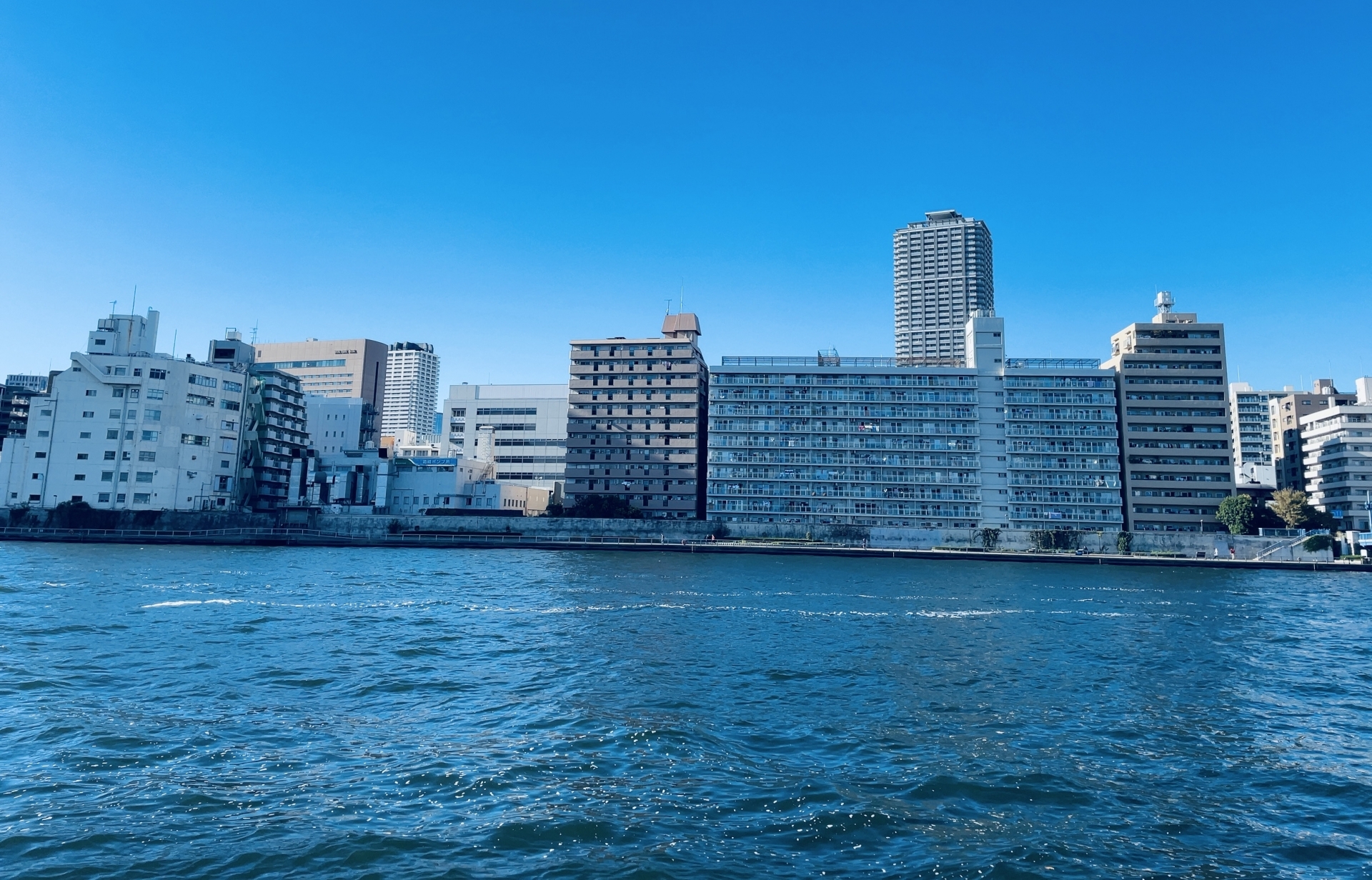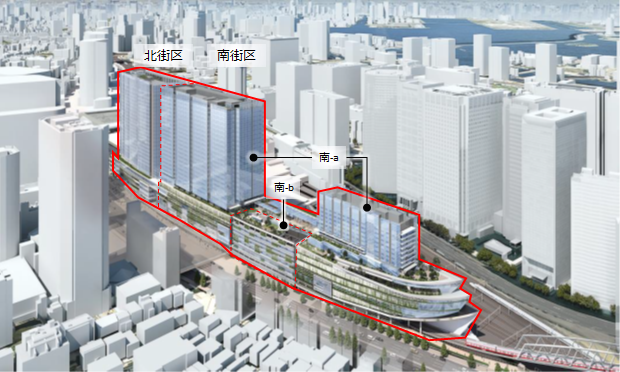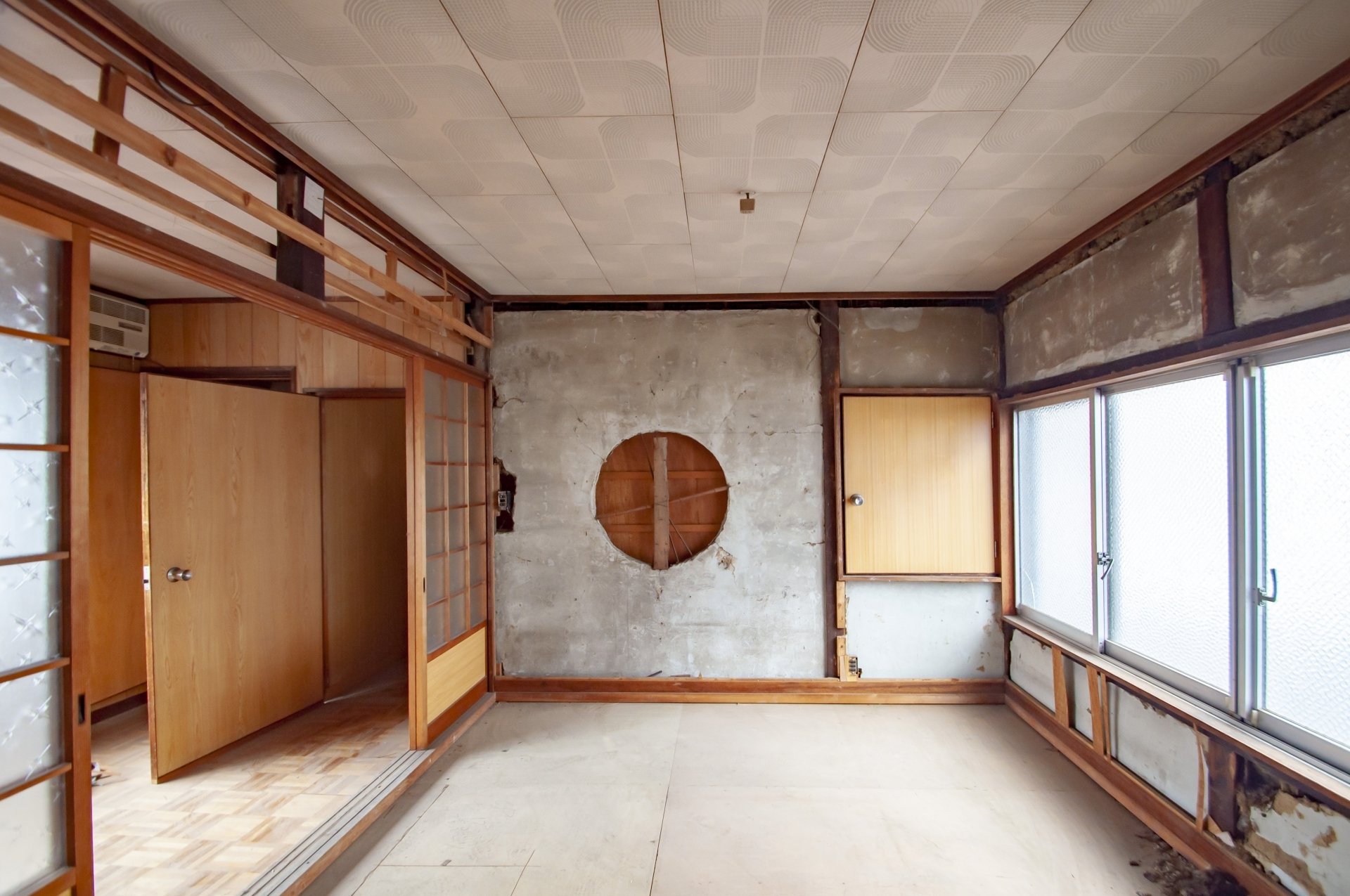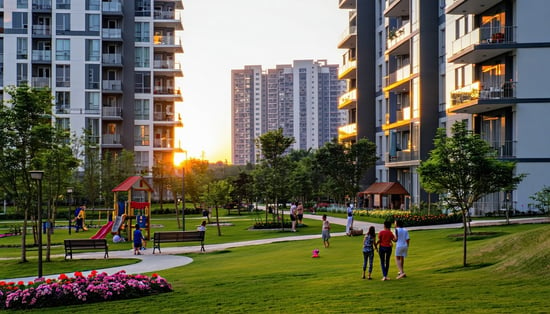Real estate investment is gaining significant attention among business leaders as a long-term asset-building strategy. Among these options, single-building apartment investment stands out for its stable cash flow and risk diversification achieved through economies of scale. By acquiring an entire building as an income-generating property, investors can generate rental income from multiple units, thereby reducing vacancy risk compared to investing in individual rooms. From a business owner's perspective, single-building apartment investments are useful for medium- to long-term asset management and strengthening business portfolios.
Key attractions of single-building apartment investments:
- Stable income: By receiving rent from multiple tenants, even if some units become vacant, the impact on overall income is limited. In densely populated areas like Tokyo and Osaka, vacancy risks are low, enabling stable rental demand and income.
- Increased asset value: Properties in metropolitan areas are always in high demand, so long-term asset value maintenance and appreciation can be expected. In particular, in areas where development projects are underway, such as the 23 wards of Tokyo and central Osaka, land value may increase due to redevelopment.
- Efficiency through scale: Operating a single building offers the advantage of being able to manage maintenance costs and repair plans in a single package. Single-building properties tend to be evaluated based on profitability metrics (yield), and are considered to have higher operational efficiency than individual units.
- Tax benefits: In some cases, tax benefits such as depreciation can be utilized when purchasing a single-building property. However, investing solely for tax benefits is risky, and it is essential to prioritize intrinsic profitability.
Due to these advantages, an increasing number of business operators are entering the single-building apartment investment market in the Tokyo metropolitan area (Tokyo, Kanagawa, Chiba, and Saitama prefectures) and the Kansai region (Osaka, Hyogo, and Kyoto prefectures). This report provides a systematic and practical explanation of the specific steps and points to consider when starting single-building apartment investment for beginners.
1. Basic Knowledge of Single-Building Apartment Investment
Before starting single-building apartment investment, it is essential to understand basic terminology and revenue structures. This understanding is essential for selecting appropriate properties and assessing risks.
1.1 Terminology Explanation
The following is a summary of key terms specific to real estate investment.
- Gross Yield (Surface Yield): The ratio of annual total rental income to the purchase price of the property. Since it does not include expenses such as management fees or taxes, it serves as a rough indicator of profitability but tends to appear higher than the actual figure.
- Net Yield: The ratio of annual rental income minus necessary expenses such as management fees, taxes, and maintenance costs, divided by the property price. This indicates profitability closer to the actual net income and is an important indicator for investment decisions.
- ROI (Return on Investment): The rate of return on invested capital. Similar to yield, but may also be calculated based on equity capital including loans. When using financing, it serves as a reference for evaluating the efficiency of equity capital.
- LTV (Loan-to-Value Ratio): The ratio of the loan amount to the property price. For example, if a property priced at 100 million yen is purchased with an 80 million yen loan, the LTV is 80%. A high LTV (close to full financing) increases repayment burdens and may strain cash flow, so caution is necessary.
- Cash flow: The cash remaining after deducting loan repayments and expenses from rental income. It indicates the net income and serves as an indicator of whether an investment property is profitable.
1.2 Types of investment properties
Similar to single-building apartments, other investment options include condominium units and single-building apartments. Let's compare their characteristics.
Investment target Characteristics/Overview Advantages Disadvantages
Condominium units (e.g., one-room units) An investment method involving the purchase of a single unit within a condominium. It requires a smaller investment and is easy to start. Can be started with a small amount of capital Easy to diversify properties If vacant, income is zero Regular maintenance fees and repair reserves are required
Single-Building Apartments Purchasing a single low-rise apartment building made of wood or lightweight steel. Generally cheaper than single-building condominiums. Relatively low property prices, higher yield tendency, shorter building lifespan, and higher maintenance frequency.
Single-Building Condominiums Purchasing a single mid-to-high-rise condominium building made of reinforced concrete (RC) or similar materials. Large revenue scale. Stable income from multiple rents, high asset value, but requires significant purchase funds and operational management efforts.
Single-building condominiums offer higher income stability due to their scale advantages, but require a larger initial investment. Additionally, management responsibilities extend to the entire building, so specialized knowledge or external partners may be necessary.
1.3 Revenue Structure and Operating Costs
The revenue structure is broadly divided into income gains (rental income) and capital gains (sale proceeds).
- Income gains: This refers to monthly rental income. In a single-building apartment complex, rental income from multiple households is collected, enabling a stable monthly cash flow. Income gains are influenced by the property's occupancy rate and rental rates.
- Capital gains: When the property is sold in the future, if it is sold for more than the purchase price, a capital gain is realized. This can be achieved through land value appreciation due to urban redevelopment or measures to maintain or enhance the value of the building (e.g., renovations). However, this is subject to market trends and therefore has low certainty.
On the other hand, the following are examples of operating costs incurred in managing the property:
- Property management fees: If you outsource property management to an external rental management company, you will pay a certain percentage (e.g., 3–5%) of the monthly rental income. The management company will handle tenant recruitment, rent collection, and troubleshooting. Selecting a reliable management company is important, as discussed later, and negotiating the fee rate is also crucial.
- Repair costs: Regular repairs are necessary to maintain a building. Large-scale repairs, such as exterior painting and roof waterproofing, occur every 10 to 15 years and require a significant amount of money. It is recommended to create a repair plan in advance and set aside money from your monthly cash flow.
- Restoration costs: These are the costs of cleaning and repairs when a tenant moves out. The cost of renovations tends to increase with each tenant move-out, especially for properties with old floor plans and facilities.
- Property Tax and Urban Planning Tax: These are annual taxes based on the assessed value of the property. It is important to estimate the approximate tax amount before purchase and incorporate it into your budget plan.
- Property Insurance: This includes fire insurance and earthquake insurance to cover damage to the building and owner liability. Disaster preparedness is crucial, and insurance coverage is often required by financial institutions when securing loans.
- Loan Repayment: If you have a loan, you will have monthly loan payments with equal principal and interest payments. It is important to consider the risk of interest rate fluctuations and establish a repayment plan with a margin of flexibility.
Considering these costs, carefully assessing whether the property can achieve a positive cash flow on a net return basis is the first step toward success.
2. Common Mistakes Beginners Make and How to Avoid Them
While investing in single-building apartments has many attractions, there are also common mistakes that beginners tend to make. It is important to learn from past failures and take preventive measures. Here, we explain five typical mistakes and how to avoid them.
2.1 Cash Shortages Due to Inadequate Investment Planning
Mistake Pattern 1: Cases where monthly cash flow turns negative due to overly optimistic cash flow projections. Specifically, this occurs when simulations are conducted without adequately factoring in factors such as rent declines or increased expenses, resulting in loan repayments becoming a significant burden. Additionally, unexpected repair costs or increased vacancy rates may prevent planned income from being realized.
Prevention Method: Developing a detailed income and expense plan is essential. Before purchasing, conduct cash flow simulations under multiple scenarios (optimistic, neutral, pessimistic) and verify indicators such as the Debt Service Coverage Ratio (DSCR). Additionally, increasing the equity ratio and contributing as much down payment as possible can help reduce monthly repayment burdens.
2.2 Income Deterioration Due to Prolonged Vacancy
Failure Pattern ②: Cases where vacancies remain unfilled and rental income cannot be secured. Poor location conditions or insufficient property appeal (equipment and floor plans commensurate with rent) may make it difficult to attract tenants, resulting in vacancy periods longer than anticipated.
Prevention: Selecting properties in areas with anticipated demand is a prerequisite during the property selection stage. During the operational phase, differentiate your property from competitors by renovating or investing in facilities that align with the needs of your target demographic. If vacancies occur, collaborate with the property management company to actively advertise and review rental conditions (e.g., offering free rent) to secure the next tenant as soon as possible.
2.3 Disappointing Tax Benefits from Tax Planning
Failure Pattern ③: Purchasing a single-building apartment complex with the expectation of tax benefits from high depreciation, but failing to achieve the expected tax savings. This occurs when a property is purchased based on an overly optimistic expected return on investment relative to the property price, resulting in higher-than-expected expenses and a net loss that exceeds the tax benefits.
Prevention Method: When making investment decisions, it is important not to overly rely on tax benefits and instead focus on the pure investment profitability. Depreciation-based tax savings are merely temporary cash flow improvements, and the possibility of future tax burdens at the time of sale (capital gains tax on the accumulated depreciation amount) should also be considered. Tax savings should be viewed as a secondary benefit and incorporated into a comprehensive tax strategy that takes into account overall business income.
2.4 Purchasing Poor-Quality Properties Based on Sales Pitch
Failure Pattern ④: Cases where investors blindly trust the “sweet talk” of real estate companies or recommendations from acquaintances and purchase properties without conducting sufficient research on their own. For example, investors may sign a contract after being told, “Rent is guaranteed (sublease), so it's safe,” only to have the guaranteed rent significantly reduced or end up purchasing a property in a location with low demand at an inflated price. A well-known example is the sublease contract-based shared housing investment scam that became a social issue.
Prevention: It is essential to conduct your own research and on-site inspections. Do not rely solely on the salesperson's words; investigate the surrounding rental market yourself and confirm the current condition of the property and any legal issues (such as illegal construction or inability to rebuild). Seeking a second opinion from another real estate professional or experienced investor can also be effective. Additionally, when entering into a sublease agreement, carefully review the contract terms (such as rent reduction clauses) and avoid relying too heavily on them.
2.5 Getting involved in fraudulent transactions
Failure Pattern 5: Cases of falling victim to apartment investment fraud. Specific examples include investment offers for non-existent properties or deceptive sales where the property turns out to be a leasehold property after purchase. Particular caution is required for transactions with unclear contract terms or those emphasizing unreasonably high returns.
Prevention Method: The best defense is to choose a reliable agent and thoroughly review the contract terms. Select agents registered with the Financial Services Agency or reputable real estate companies, and adopt a firm stance by not rushing into contracts for suspicious offers. Consult with experts (real estate consultants or lawyers) regarding the Important Matters Explanation Document and contract, and do not sign the contract until you fully understand all unclear points.
The above failure patterns can be avoided with proper preparation and careful judgment. In the next section, we will examine the actual investment process step by step, keeping these points in mind.
3. How to Start Investing in Single-Building Apartments
This section explains the specific steps beginners should take when starting to invest in single-building apartments. Understand the process from property selection to securing financing, and confirm the key points to note at each step.
3.1 Clarify Your Investment Purpose and Strategy
Before starting single-building apartment investment, first clearly define your investment purpose and goals. Are you prioritizing cash flow and seeking stable monthly income, or are you focusing on asset expansion and tax savings, or aiming for future capital gains? Clarifying this direction will determine the type of property to choose, the area, and the funding plan.
3.2 Setting Property Selection Criteria
Next, establish your own property selection criteria. Consider the following points when creating your criteria.
- Profitability indicators: Focus not only on surface yield but also on net yield and ROI. For example, setting a minimum threshold such as “net yield of at least X%” allows you to quickly eliminate unprofitable properties.
- Property size: For beginners, it is generally recommended to start with small to medium-sized properties (approximately several million yen to 100 million yen). Large properties with too many units are difficult to manage, so start with something within your reach.
- Age of the property: For reinforced concrete (RC) apartments, consider the useful life (the legal useful life is 47 years) and properties built around 20 years ago tend to have relatively longer loan terms. However, older properties have the advantage of lower prices and higher yields, so consider factors such as renovation costs and earthquake resistance when evaluating them.
- Structure: RC (reinforced concrete) and S (steel frame) apartment buildings are more durable and stable in the long term than wooden apartment buildings. They are more expensive, but if you plan to hold the property for the long term, RC is a safer choice.
- Area: Consider factors such as distance from the station, access to commercial facilities, and the presence of universities and companies, and prioritize locations with high demand. This will be discussed in more detail in Section 5 below.
3.3 Considerations for location conditions
In real estate investment, location is often referred to as “the most important factor.” For single-building apartments, choosing the right location is essentially equivalent to managing vacancy risk. The key points to consider when evaluating location conditions are as follows:
- Transportation Convenience: Within walking distance of the nearest station (preferably within 10 minutes on foot) is ideal. In the Tokyo metropolitan area and the Kansai region, properties near stations are highly competitive and have strong tenant demand. Additionally, confirm access to major terminal stations (including transfer options and direct routes).
- Convenience for daily living: Having essential facilities such as supermarkets, convenience stores, hospitals, and schools nearby is a key factor in attracting long-term tenants. For family-oriented properties, consider proximity to parks and educational facilities, while for single-occupant units, consider proximity to dining districts and entertainment facilities.
- Future potential: Areas with redevelopment plans or infrastructure improvement projects have the potential for future increases in asset value and demand. We also check information on municipal urban planning (land readjustment, new station construction, etc.) and plans for major companies to move into the area.
- Competitive properties: We survey the rental property market in the surrounding area to understand the rent levels and vacancy rates of competitive properties. Areas with too much competition or an oversupply of new condominiums require caution. Conversely, areas with a supply shortage and a large gap between supply and demand are promising targets.
- Regional characteristics: Preferred property types and floor plans vary by area. For example, areas with many universities have high demand for one-room apartments, office districts have high demand for 1LDK units for single individuals, and industrial areas have high demand for family-oriented properties. We select locations that align with the target demographic by considering the regional demographic trends and industrial structure.
3.4 Development of a financial plan
Single-building apartment investments require a significant amount of capital, so a detailed financial plan is crucial for success.
- Equity and Financing: Determine how much equity to invest and how much to borrow. A higher equity ratio reduces repayment burdens but may also increase operational risks by depleting available funds. Generally, having a down payment of 20–30% is said to facilitate favorable loan negotiations. Financial institutions prioritize the borrower's attributes (such as annual income and asset background), so business owners should present their company's financial statements and overall capabilities during loan reviews.
- Choosing a lender: Lenders such as banks, credit unions, and non-bank lenders have different lending policies and conditions. Look for financial institutions that are active in real estate investment loans and compare interest rates, loan terms, and collateral evaluation trends. Mega banks offer low interest rates but have strict screening processes, while regional banks and credit unions may be more flexible for local properties.
- Repayment Simulation: Set the loan amount, interest rate, and term to calculate the monthly repayment amount. If the repayment amount exceeds 70% to 80% of rental income, there is a risk of being unable to withstand vacancies or interest rate hikes. Develop a repayment plan with a margin and consider the possibility of making additional prepayments.
- Miscellaneous expenses: In addition to the property price, initial costs (brokerage fees, registration fees, loan fees, fire insurance premiums, real estate acquisition tax, etc.) amounting to approximately 5–7% of the property price are required at the time of purchase. These must also be covered from your own funds, so be sure to include them in your plan.
- Contingency fund: It is important to set aside a contingency fund to cover unforeseen expenses (sudden repairs, litigation, disaster recovery, etc.). As a general guideline, it is advisable to secure an amount equivalent to several months' worth of annual rental income.
3.5 Key Points for Financing
Understand the key points for securing financing smoothly.
- Organize your financial attributes: Prepare documents outlining your financial situation and the property's business plan (financial statements, tax payment certificates, business plan, etc.). For business owners, the performance of your company and executive compensation may also influence the loan decision, so it is advisable to prepare explanatory materials.
- Property Valuation: Financial institutions place significant emphasis on the profitability and collateral value of the property itself. They will verify that the property is profitable using the income capitalization method and that the remaining legal useful life of the property aligns with the loan term. Prepare a rent roll (list of rents for each unit) and surrounding market data to demonstrate the property's viability.
- Sufficient equity capital: As mentioned earlier, the more equity capital you have, the better. Especially for beginners, full financing is strictly prohibited. To give the loan officer the impression of a “sound investor,” it is important to demonstrate a willingness to invest your own risk capital.
- Interest rate negotiation: If you have certain attributes or track record, you may be able to negotiate the interest rate or loan fees. Choosing between a fixed or variable interest rate is also important, and should be considered based on market interest rate trends and your risk tolerance.
- Response to risk explanations: Financial institutions will ask questions about risks. For example, “What will you do if vacancies increase?” or “What will you do if interest rates rise?” Prepare specific countermeasures (e.g., rent adjustment strategies to attract tenants, early repayment plans) to address these questions.
By completing these steps 3.1 to 3.5, you will have reached the starting point for your investment. In the next chapter, we will explain the characteristics and strategies of each region from the perspectives of the Tokyo metropolitan area and the Kansai region.
4. Characteristics and Strategies by Investment Area (Tokyo Metropolitan Area and Kansai Region)
One of the key factors determining the success or failure of single-building apartment investment is the investment area. The Tokyo metropolitan area and the Kansai region differ in terms of real estate market conditions, rental demand, and yield rates. Here, we will explain the characteristics and strategies of the Tokyo metropolitan area and the Kansai region to help you select an investment area.
4.1 Tokyo Metropolitan Area (Tokyo, Kanagawa, Chiba, Saitama)
Characteristics: The Tokyo Metropolitan Area is Japan's most densely populated region, with extremely high rental demand. In particular, the Tokyo 23 wards are a stable market recommended even for beginners in real estate investment. While yields are relatively low compared to other regions, this is offset by low vacancy risks and high stability.
- Yield Rates: The average surface yield for single-building apartments in the Tokyo Metropolitan Area is approximately 7.5%, which is lower than other regions. However, this reflects the high property prices and strong demand. The actual yield is expected to range from the mid-4% to 6% range.
- Property Prices: In popular areas such as the Tokyo 23 wards and Yokohama/Kawasaki, the price of a single-building property typically reaches the hundreds of millions of yen. Therefore, securing financing and a detailed business plan are essential.
- Demand Segment: Within Tokyo's 23 wards, there is diverse demand ranging from young singles (students and working professionals) to high-income individuals (luxury rentals). In Chiba, Saitama, and Kanagawa, there is significant demand from singles in areas within commuting distance to the city center, while suburban areas also see demand from family households.
- Strategy: In the Tokyo metropolitan area, it is crucial to “never compromise on location.” Even if the yield is slightly lower, prioritizing properties near stations or in popular areas ensures long-term stability. Additionally, targeting redevelopment areas (e.g., Nihonbashi in Tokyo, Shibuya redevelopment, Yokohama Minato Mirai, etc.) can offer potential future capital gains. For beginners, it is advisable to start by considering the popular central five wards of Tokyo (Chiyoda, Chuo, Minato, Shibuya, and Shinjuku) or areas near major stations within the Tokyo 23 wards.
- Specific Examples:
- Tokyo Central Area: Shibuya and Shinjuku have high rental rates and consistently strong demand for tenants. However, property prices are also high, so yields may settle around 3–5%. This area is suitable for asset-holding strategies prioritizing brand value.
- Joto and Jinnan Areas: Apartments within walking distance of stations can achieve high occupancy rates for both single and family households. There is also news about future suburban development, making this an area with potential for long-term value appreciation.
- Yokohama and Kawasaki (Kanagawa): As the second-largest metropolitan area and commercial hub after Tokyo, these areas have steady rental demand as a commuting belt for Tokyo. While surface yields may be slightly higher than in the Tokyo 23 wards, the robust demand is well-established.
- Chiba and Saitama: Cities such as Chiba City, Funabashi City, and Saitama City, which have good access to Tokyo, are stable due to demand for suburban housing near the city center. Property prices are lower than in the city center, and surface yields are expected to be around the Tokyo metropolitan average (approximately 6.5%).
4.2 Kansai Region (Osaka Prefecture, Hyogo Prefecture, Kyoto Prefecture)
Features: The Kansai region is centered around Osaka City, Japan's second-largest economic hub. Osaka City, the Hanshin area (including Kobe City), and Kyoto City have strong rental demand. Yields are slightly higher than in the Tokyo metropolitan area, and property prices are relatively lower.
- Yield Market: The average yield for single-building apartments in the Kansai region is approximately 8.3%. This is about 1 percentage point higher than the Tokyo metropolitan area, making it easier to adopt a cash flow-focused investment strategy. However, within the region, the central area of Osaka City has relatively lower yields (around 6%), while suburban areas and other cities have higher yields (around 8%).
- Property prices: In the central area of Osaka City, prices range from around 100 million yen to several billion yen. In the Hanshin area (Nishinomiya, Ashiy, Kobe) and Kyoto City, prices are similar or slightly lower. In suburban areas or older properties, there are cases where properties can be found for less than 100 million yen, making it easier to find properties in an entry-level price range compared to the Tokyo metropolitan area.
- Demand segments:
- In Osaka City, the main demand comes from single individuals. Areas near business districts (Umeda, Yodoyabashi, etc.) and entertainment districts (Namba, Shinsaibashi) are popular among single working professionals. Additionally, in areas with high tourism demand (around Minami, etc.), there has been recent activity in the short-term rental market, but operations must be conducted in compliance with legal regulations.
- Kyoto City has significant demand from students and the tourism industry. Kyoto, in particular, has many universities, so there is stable demand for one-room apartments for students. However, many areas have development restrictions due to landscape regulations and the preservation of the historic city, so it is important to understand these regulations.
- Kobe City (Hyogo Prefecture) has demand from commuters to Osaka and local companies. The Hanshin area is also popular with families, so it is important to offer a variety of floor plans.
- Strategy: The strategy for the Kansai region is to strike a balance between yield and future potential. Osaka City has many positive developments, such as the 2025 World Expo and the second phase of the Umeda redevelopment project, which are expected to drive rental demand and land price increases in the medium to long term. Recommended areas within Osaka City include Umeda (Kita Ward), Namba and Shinsaibashi (Chuo Ward), and the rapidly developing Tennoji and Abeno areas. These areas offer both high demand and future potential. In Kyoto City, properties near the city center and university areas (Kyoto University, Doshisha University, etc.) are attractive for student demand. Additionally, Kyoto has rental demand backed by tourism (such as hotel conversions), so it is important to consider location and flexibility in property use. In Kobe City, the downtown area around Sannomiya and Motomachi, as well as Nishinomiya Kitaguchi, are prime locations due to their transportation hubs. However, it is important to consider the degree of dependence on the local economy and keep an eye on the movements of major corporations.
- Specific examples:
- Osaka Umeda Area: Asset value is expected to rise due to the “Umeda” redevelopment project. It is also an office district with demand from single high-income earners. Surface yields may range from 4% to 6%, but stability is excellent.
- Osaka Minami Area (Namba, Shinsaibashi): Concentration of commercial facilities drives strong demand from single individuals. As a tourist destination, future options such as change of use (conversion to retail stores or guesthouses) may be considered. Yields of approximately 6% to 7%.
- Kyoto Sakyo Ward: The Kyoto University and Doshisha University areas are popular for one-room investments due to student demand. Newly constructed properties have low vacancy risks, but note restrictions on redevelopment due to landscape regulations. Yields of around 7% are possible.
- Kobe Sannomiya Area: Sannomiya Station is undergoing redevelopment plans, and there is a trend of population return. The port area of Kobe is popular for residential use, with stable demand including family-type properties. Yields of 6–8% are available for many properties.
Whether in the Tokyo metropolitan area or the Kansai region, the key points for selecting an area are “population growth” and “predictable future supply and demand.” Major regional cities such as Nagoya and Fukuoka are also worth considering for their balance of yield and demand, but
5. Operational and Management Considerations
After purchasing a property, you enter the rental management phase. In the operation and management of a single-building apartment complex, there are many situations where specialized knowledge and execution ability are required. Here, we will explain key operational points such as selecting a management company, vacancy prevention strategies, and maintenance plans.
5.1 Selecting a Management Company
Owners of single-building apartment complexes typically entrust operations to a management company without directly interacting with tenants. Selecting a reliable management company is crucial for turning real estate investment into passive income and focusing on your main business.
- Roles of a property management company: These include tenant recruitment (advertising), contract procedures, rent collection, complaint handling, building inspections, cleaning, move-out inspections, and arranging for restoration work. Compare service contents, such as whether they have a 24-hour call center.
- Selection criteria:
- Track record: Companies with a large number of managed properties and a strong local presence are reliable. Companies that manage many properties of similar size in the same area are familiar with the local rental market.
- Fees: As mentioned earlier, rental management fees are generally 3–5% of the rent. There is room for negotiation, so obtain quotes from multiple companies and compare the balance between services and costs. It is not just a matter of choosing the cheapest option; consider the service content and quality of response as well.
- Quality of staff: Communicate with staff by phone or in person to confirm that they respond quickly and explain things clearly. The competence of staff affects how quickly vacancies are filled and issues are resolved.
- Management plan: Confirm additional services such as cleaning frequency, regular inspections, and renovation proposals. A comprehensive management plan that includes building maintenance (equipment inspections, legal inspections) reduces the owner's workload.
- Contract Type: There are two main contract types: property management contracts (general management contracts) and sublease contracts (full-service leasing). Under a general management contract, the owner bears the risk of vacancies but receives the full market rent. Sublease contracts guarantee a fixed rent but may have higher fees and carry the risk of future rent reductions. For beginners, we recommend starting with a general management contract while collaborating with a property management company to build experience.
5.2 Vacancy Prevention
Vacancies are the biggest enemy of rental property management, directly impacting revenue. In a single-building apartment complex, managing multiple units at once means that even if some units are vacant, the entire building is unlikely to be completely vacant. However, keeping the vacancy rate as low as possible is key to maximizing revenue.
Effective Vacancy Countermeasures:
- Rent Review: Regularly check whether rents are too high compared to surrounding market rates and adjust to appropriate levels. If a unit remains vacant for an extended period, consider lowering the rent (while maintaining balance with other tenants).
- Enhance advertising: Do not rely solely on the management company. Share property information with multiple real estate agencies, and post attractive photos and catchy slogans on online listings to increase visibility. If vacancies persist, request the management company to provide a recruitment status report to track the number of inquiries and viewings.
- Renovations and equipment upgrades: For older properties, interior renovations can help reduce vacancies. For example, replace old Japanese-style rooms with flooring, upgrade kitchen and bathroom fixtures, install free Wi-Fi, or add air conditioning. Consider improvements that can lead to rent increases or higher closing rates relative to the investment.
- Target narrowing: We will clarify the type of tenants that are suitable for the location and characteristics of the property and develop a recruitment strategy that appeals to that group. For example, if the property is located near a university, we will advertise it as “students welcome, furniture and appliances available upon request,” and if it is suitable for families, we will advertise it as “area with excellent childcare facilities, walking distance to schools.”
- Addressing tenant needs: In areas with high demand for pets, consider allowing pets in the property. For security-conscious tenants, install automatic locks and security cameras. Adapting to current trends is also effective. Small changes, such as replacing mailboxes with larger boxes compatible with online shopping, can also make a difference.
- Improving tenant satisfaction: Keeping existing tenants for longer reduces vacancy rates. Conduct regular cleaning and equipment inspections to maintain the appearance of the building and common areas. Respond promptly to tenant requests (such as noise mitigation or repair requests) and do not ignore complaints to prevent tenants from moving out.
5.3 Maintenance and Repair Plan
To ensure the long-term stable operation of a single-building apartment complex, systematic maintenance and management are essential.
- Long-Term Maintenance Plan: While condominiums have established long-term maintenance plans, it is advisable to develop an independent plan for single-building investment properties. Based on the building's age, anticipate future major repairs such as exterior painting (approximately every 10 years), roof waterproofing (every 10–15 years), and plumbing and drainage system repairs (every 20–30 years), and set aside funds for these expenses. Having a plan in place enables you to prepare funds and carry out repairs at the appropriate time.
- Daily Maintenance: Ensure that all legally required inspections, such as elevator inspections and fire safety equipment checks, are conducted without omission. Elevator maintenance contracts and water tank cleaning should be incorporated into the annual plan through the management company. Additionally, do not overlook minor maintenance tasks such as daily cleaning, light bulb replacement, and landscaping to maintain the building's asset value.
- Preventive maintenance: Rather than repairing something after it breaks, it is important to have a mindset focused on preventing breakdowns and accidents. For example, it is too late to address roof leaks once they occur, so roof waterproofing should be reapplied early when signs of deterioration are detected. Earthquake retrofitting should also be considered for buildings constructed before 1981 (pre-1981 seismic standards).
- Management association mindset: Single-building owners are like the chairpersons of a management association for their buildings. From an overall optimization perspective, invest not only in rent but also in maintaining and improving the value of the building. In the long run, buildings that are clean and have updated facilities are more attractive to tenants and will have a higher appraisal value when sold.
5.4 Troubleshooting
Various problems may arise during operation. Be sure to understand potential problems and how to deal with them.
- Rent arrears: Cases where tenants fail to pay rent. If the management company sends reminders and the tenant still does not pay, the management company can receive advance payment from the guarantee company if a guarantee company is used. Joining a guarantee company is becoming essential these days. In the worst case, eviction proceedings may be necessary, so it is important to collaborate with a lawyer familiar with legal procedures.
- Neighborhood disputes: Noise between tenants, violations of garbage disposal rules, complaints from neighboring residents, etc. The management company will mediate or issue warnings. If necessary, we distribute or post rule documents to inform tenants, and if the issue persists, we may consider issuing an eviction notice for breach of contract.
- Equipment Malfunctions: Prompt repair arrangements are essential for malfunctions in equipment such as water heaters or air conditioners. Since the owner is legally obligated to repair such equipment under the lease agreement, we arrange repairs promptly and consider temporary alternatives (e.g., renting a water heater) if possible.
- Disaster response: In the event of natural disasters such as earthquakes or typhoons, promptly confirm the extent of damage and contact insurance companies. Depending on the situation, it may be necessary to confirm the safety of residents and issue evacuation instructions. It is advisable to conduct regular drills and share disaster preparedness information with residents.
Property management is a series of routine tasks, but the key to success lies in maintaining a mindset focused on continuous improvement through the PDCA cycle, never forgetting that it is a business operation.
6. Summary (Importance of long-term asset formation and risk management)
Investing in single-building apartments is an attractive asset management tool for business owners, and if done properly, it can provide stable long-term income and asset growth. However, success requires a long-term perspective and meticulous risk management.
Importance of a long-term perspective: Real estate investment is not a means of obtaining large returns in a short period of time, but rather an investment that takes time. Rather than being swayed by market fluctuations, it is important to look 10 or 20 years ahead and nurture your properties. It is precisely because long-term ownership is the premise that daily management and planned maintenance come into play, leading to compound growth in asset value.
Importance of risk management: Real estate investment involves various risks (vacancies, rent declines, disasters, interest rate hikes, liquidity risks, etc.). By understanding these risks and preparing for them in advance, many failures can be avoided. The following are the basics of risk management:
- Diversification: In addition to investing in a single property, consider diversifying your portfolio by combining properties that differ in terms of location, type, and age to mitigate the impact of a single property performing poorly.
- Insurance: Fire and earthquake insurance are essential. In addition, consider rent guarantee insurance for owners and personal liability insurance.
- Capital planning: Maintain a certain amount of cash at all times to ensure liquidity and enable early loan repayment and emergency funding.
- Understanding laws and regulations: Understand relevant laws and regulations, such as the Building Standards Act and the Lease Act, and pay attention to changes in the law.
- Recently, there have been changes in the environment, such as regulations on private lodging and the digitization of lease agreements, so it is important to stay informed.
- Exit strategy: Drawing up an exit strategy before investing is also part of risk management. Even if you plan to hold the property for the long term, prepare several scenarios so that you can make flexible decisions based on the situation, such as selling when the market overheats and prices rise beyond expectations, or considering selling or rebuilding when the property becomes dilapidated and yields decline.
Finally, what we want to emphasize in this report is the importance of “never forgetting your初心 (beginner's mindset).” By maintaining the same enthusiasm for learning and caution you had when you first started investing, avoiding complacency from success stories, and always keeping the lessons from failures in mind, single-building apartment investment can become a powerful tool for building your assets.
We hope that those of you embarking on single-building apartment investment will achieve success in real estate management as a business through sound preparation and accurate decision-making, and build long-term wealth. Through the business of rental management, your perspective as a manager will expand, and your skills in solid asset formation and risk management will improve.
The above provides a comprehensive overview of how to start single-building apartment investment and the key points for success. Although this article is lengthy, we hope it will serve as a guide for your future investment activities. We wish you the best of luck in your endeavors.

Daisuke Inazawa
Representative Director of INA&Associates Inc. Based in Osaka, Tokyo, and Kanagawa, he is engaged in real estate sales, leasing, and management. He provides services based on his extensive experience in the real estate industry. Based on the philosophy that “human resources are a company's most important asset,” he places great importance on human resource development. He continues to take on the challenge of creating sustainable corporate value.

.png)


